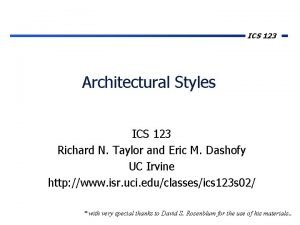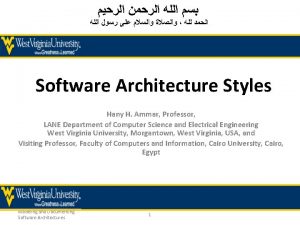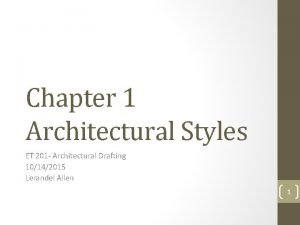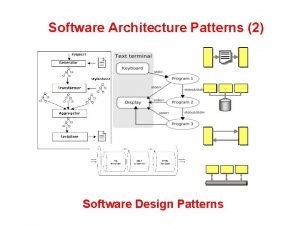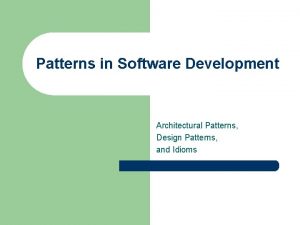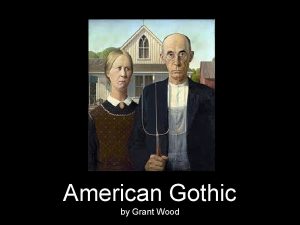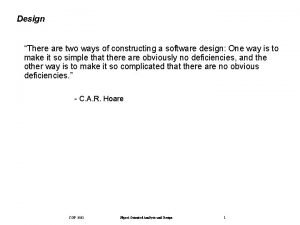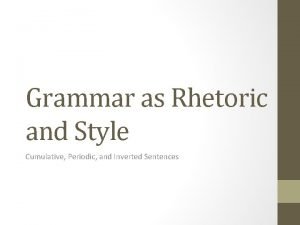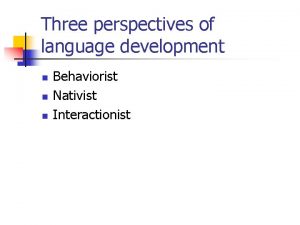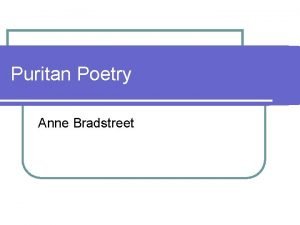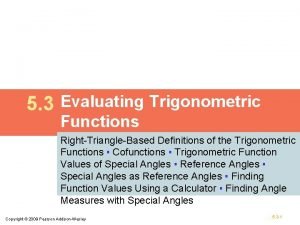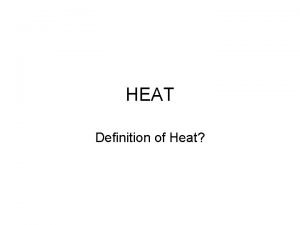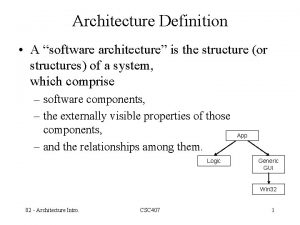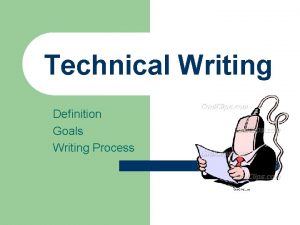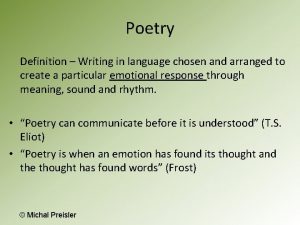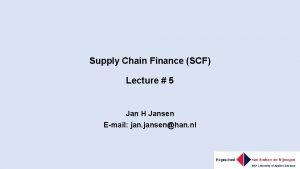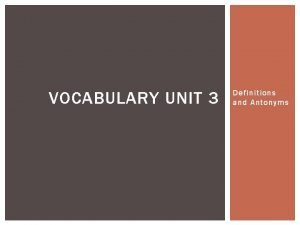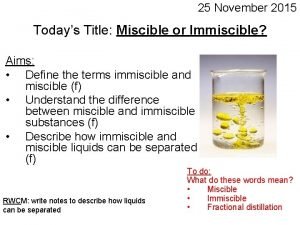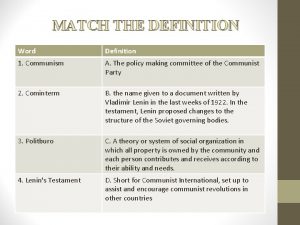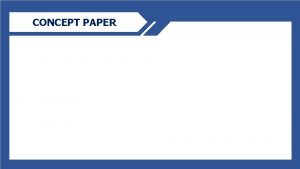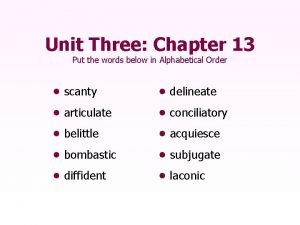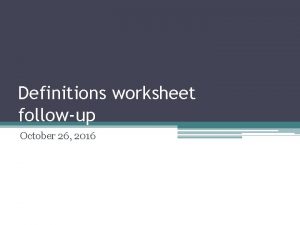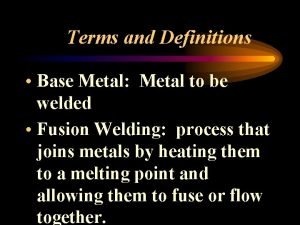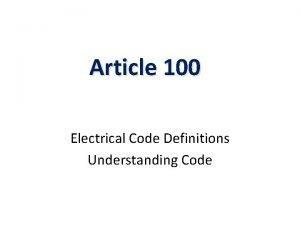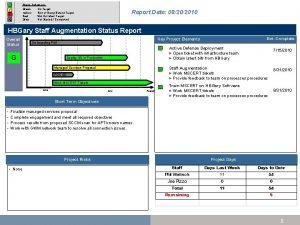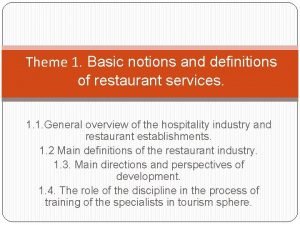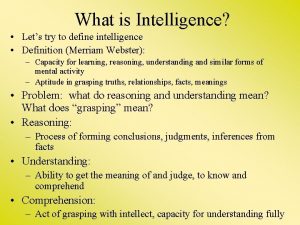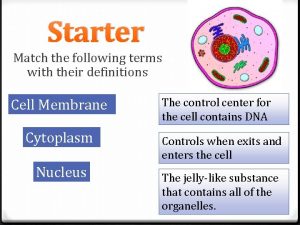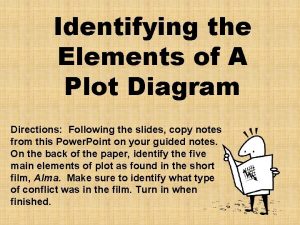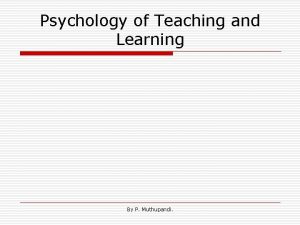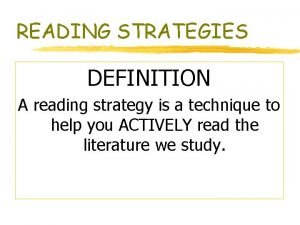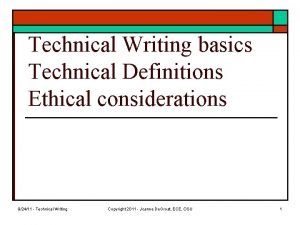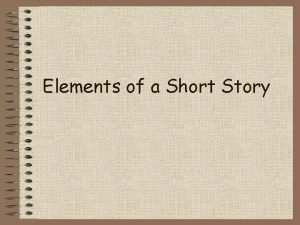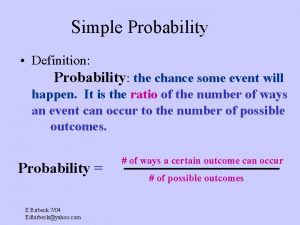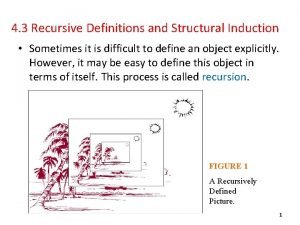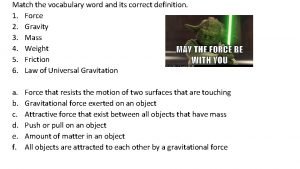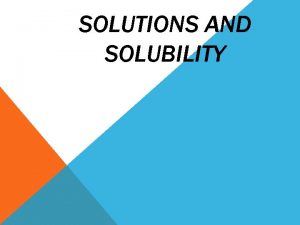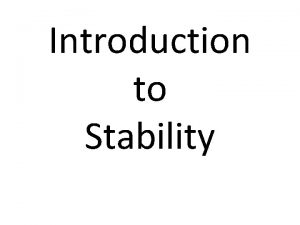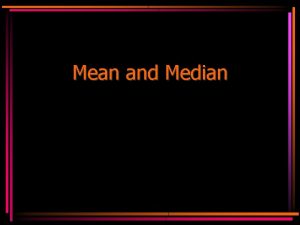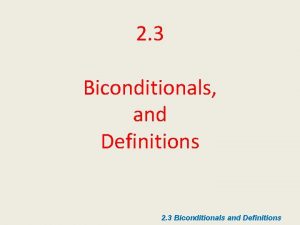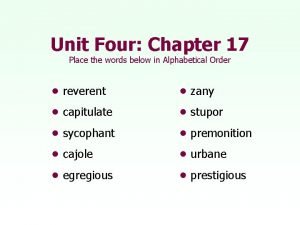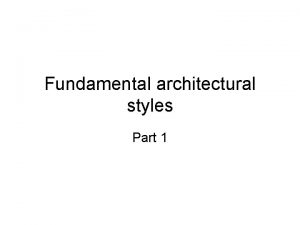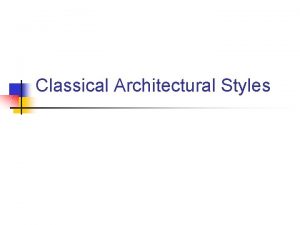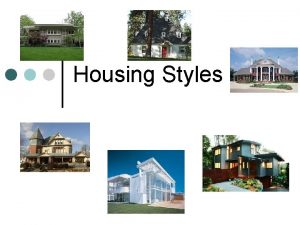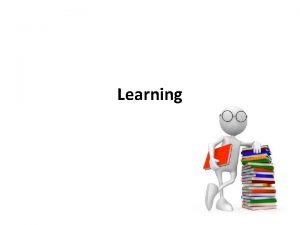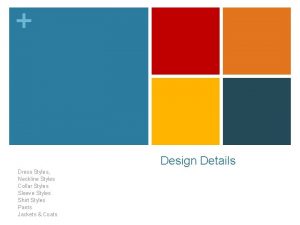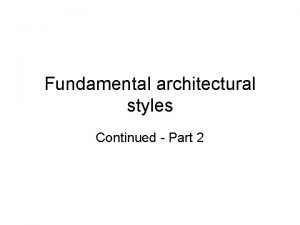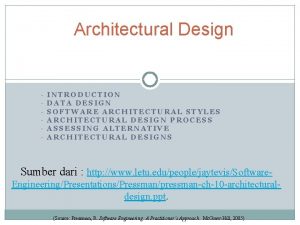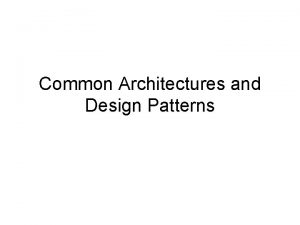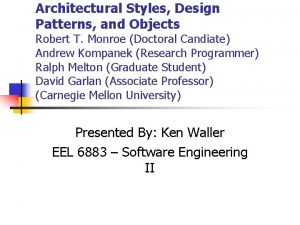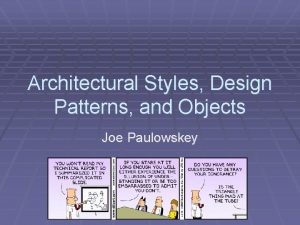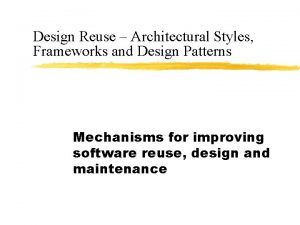Architectural Styles Patterns Definitions of Style F Architectural
















































































- Slides: 80

Architectural Styles & Patterns

Definitions of Style F Architectural styles are recurring organizational patterns and idioms. - Shaw & Garlan F Established, shared understanding of common design forms is a mark of a mature engineering field. - Shaw & Garlan F Architectural style is an abstraction of recurring composition and interaction characteristics of a set of architectures. - Taylor F Styles are key design idioms that enable exploitation of suitable structural and evolution patterns and facilitate component, connector, and process reuse. - Medvidovic

Architectural Styles and Patterns F An architectural style defines a family of architectures constrained by ü Component/connector vocabulary, e. g. , û layers and calls between them ü Topology, e. g. , û stack of layers ü Semantic constraints, e. g. , û a layer may only talk to its adjacent layers F For each architectural style, an architectural pattern can be defined ü It’s basically the architectural style cast into the pattern form ü The pattern form focuses on identifying the a problem, context of a problem with its forces, and a solution with its consequences and tradeoffs; it also explicitly highlights the composition of patterns

Basic Properties of Styles F A vocabulary of design elements ü component and connector types ü e. g. , pipes, filters, objects, servers F A set of configuration rules ü topological constraints that determine allowed compositions of elements û e. g. , a component may be connected to at most two other components F A semantic interpretation ü compositions of design elements have well-defined meanings F Possible analyses of systems built in a style ü code generation is a special kind of analysis

Benefits of Styles F Design reuse ü well-understood solutions applied to new problems F Code reuse ü shared implementations of invariant aspects of a style F Understandability of system organization ü a phrase such as “client-server” conveys a lot of information F Interoperability ü supported by style standardization ü e. g. , CORBA, Java. Beans F Style-specific analyses ü enabled by the constrained design space F Visualizations ü style-specific depictions matching engineers’ mental models

Describing an Architectural Style F Software architectures are represented as graphs where ü nodes represent components, û procedures û modules û processes û tools û databases û … ü and edges represent connectors. û procedure calls û event broadcasts û database queries û pipes û …

Determining an Architectural Style F What is the design vocabulary? F What are the allowable structural patterns? F What is the underlying computational model? F What are the essential invariants of the style? F What are common examples of its use? F What are the (dis)advantages of using the style? F What are the style’s specializations?

Architectural Styles and Patterns F Architectural styles and patterns ü ü ü ü ü Data flow Call-and-return Interacting processes Data-oriented repository Data-sharing Hierarchical Process control systems Table-driven Other F Heterogeneous architectures

“Pure” Form of Styles F When we introduce a new style, we will typically first examine its “pure” form. ü Pure architectural style are rarely found in practice ü Systems in practice û Regularly deviate from the academic definitions of these systems û Typically feature many architectural styles simultaneously ü As an architect you must understand the “pure” styles to understand the strength and weaknesses of the style as well as the consequences of deviating from the style

Observations F Different styles result in ü different architectures ü architectures with greatly differing properties F A style does not fully influence the resulting architecture ü ü a single style can result in different architectures considerable room for individual judgments variations among architects different emphases û e. g. , imposed by the customer F A style defines a domain of discourse ü about a problem (domain) ü about the resulting system ü different architectures lead architects to ask different questions

Data Flow F A data flow system is one in which: ü The availability of data controls the computation ü The structure of the design is determined by the orderly motion of data from component to component ü The pattern of data flow is explicit ü This is the only form of communication between components F There are variety of variations on this general theme: ü How control is exerted (e. g. , push versus pull) ü Degree of concurrency between processes ü Topology

Data Flow F Patterns of Data Flow in Systems ü Data can flow in arbitrary patterns ü Primarily we are interested in linear data flow patterns ü. . . or in simple, constrained cyclical patterns. . .

Data Flow F Kinds of Data Flow Architectures ü Batch sequential ü Dataflow network (pipes&filters) û acyclic, fanout, pipeline, Unix, etc. ü Closed loop control F Components: Data Flow Components ü Interfaces are input ports and output ports û Input ports read data; û output ports write data. ü Computational model: û read data from input ports, compute, write data to output ports

Data Flow F Connectors: Data Streams ü Uni-directional û Usually asynchronous, buffered ü Interfaces are reader and writer roles ü Computational model: transport data from writer roles to reader roles F Systems ü Arbitrary graphs ü Computational model: functional composition

Push-Based Style F Distinguished from pull-based (e. g. , the Web)

Push-Based Style F Components ü producer ü receiver F Connectors ü ü channel broadcaster transport system repeater, cache, proxy F Asymmetric communication model ü producers ≠ receivers ü fewer producers but more receivers per producer than eventbased style F Relatively tight coupling between source and receiver via subscribed channels

Batch Sequential Systems F Components (processing steps) are independent programs F Connectors are some type of media - traditionally magnetic tape F Each step runs to completion before the next step begins

Batch Sequential Systems F History ü Mainframes and magnetic tape ü Limited disk space ü Block scheduling of CPU processing time F Business data processing ü Discrete transactions of predetermined type and occurring at periodic intervals ü Creation of periodic reports based on data periodic data updates

Batch Sequential Systems F Transformational data analysis ü Raw data is gathered analyzed in a stepwise, batchoriented fashion F Typical applications: non real-time, batch oriented computations such as: ü Payroll computations ü IRS tax return computations

Pipes and Filters F It provides a structure for systems that process a stream of data. ü Each processing step is encapsulated in a filter component. ü Data is passed through pipes between adjacent filters. ü Recombining filters allows you to build families of related systems.

Pipes and Filters F The tape of the batch sequential system, morphed into a language and operating system construct F Compared to the batch-sequential style, data in the pipe&filter style is processed incrementally. F Components (Filters) ü Read streams of data on input producing streams of data on output ü Local incremental transformation to input stream (e. g. , filter, enrich, change representation, etc. ) ü Data is processed as it arrives, not gathered then processed ü Output usually begins before input is consumed F Connectors (Pipes) ü Conduits for streams, e. g. , first-in-first-out buffer ü Transmit outputs from one filter to input of other

Pipes and Filters F Invariants ü Filters must be independent, no shared state ü Filters don’t know upstream or downstream filter identity ü Correctness of output from network must not depend on order in which individual filters provide their incremental processing F Common specialisations ü pipelines - linear sequences of filters ü bounded pipes - limited amount of data on a pipe ü typed pipes - data strongly typed

Pipes and Filters F Examples ü Unix pipes allow for connecting Unix processes û cat file | grep Erroll | wc -l ü lex/yacc-based compiler û Scanning->parsing->semantic analysis->code generation ü Image processing û Application of various filters ü Signal processing ü Voice and video streaming ü …

Data Pulling and Data Pushing F What is the force that makes the data flow? F Four choices: ü Push: data source pushes data in a downstream direction ü Pull: data sink pulls data from an upstream direction ü Push/pull: a filter is actively pulling data from a stream, performing computations, and pushing the data downstream ü Passive: don’t do either, act as a sink or source for data F Combinations may be complex and may make the “plumber’s” job more difficult ü if more than one filter is pushing/pulling, synchronization is needed

Data Pulling and Data Pushing F A Push Pipeline With an Active Source

Data Pulling and Data Pushing F A Pull Pipeline With an Active Sink

Data Pulling and Data Pushing F A Mixed Push-pull Pipeline With Passive Source and Sink

Data Pulling and Data Pushing F A Pipeline With Active Filters and Synchronizing Buffering Pipes

Pipes and Filters F Strengths ü Easy to understand - overall behaviour is a simple ü ü ü composition of behaviour of individual filters. Reuse - any two filters can be connected if they agree on that data format that is transmitted. Ease of maintenance - filters can be added or replaced. Prototyping e. g. Unix shell scripts are famously powerful and flexible, using filters such as sed and awk. Architecture supports formal analysis - throughput and deadlock detection. Potential for parallelism - filters implemented as separate tasks, consuming and producing data incrementally.

Pipes and Filters F Weaknesses ü Can degenerate to ‘batch processing’ - filter processes all of its data before passing on (rather than incrementally). ü Often poor inherent performance – e. g. , parsing/unparsing in each filter & sharing global data is expensive or limiting. ü Can be difficult to design incremental filters. ü Not appropriate for interactive applications - doesn’t split into sequential stages. û Model-View-Controller is a specific styles for interactive systems.

Pipes and Filters F Weaknesses ü Synchronization of streams will constrain architecture. ü Error handling is Achilles heel û e. g. filter has consumed three quarters of its input and produced half its output and some intermediate filter crashes! û Restart or resynchronize pipeline. ü Implementation may force lowest common denominator on data transmission û e. g. Unix scripts everything is ASCII.

Pipe-and-Filter vs. Batch Sequential F Both decompose the task into a fixed sequence of computations (components) interacting only through data passed from one to another Batch Sequential Pipe-and-Filter course grained fine grained high latency results starts processing external access to input localized input no concurrency possible non-interactive awkward but possible

Call-and-return F Main Program + Subroutine Architecture ü Classic style since 60 s - pre-OO. ü Hierarchical decomposition into subroutines (Components) each solving a well defined task/function. ü Data passed around as parameters. ü Main driver provides a control loop for sequencing through subroutines. F Information hiding ü ADT, object, naive client/server

Data Abstraction/Object Oriented F Widely used architectural style ü Components: û Objects or abstract data types (data and associated operations) ü Connections: û Messages or function/procedure invocations ü Key aspects: û Object preserves integrity of representation - no direct access û Representation is hidden from objects

Data Abstraction/Object Oriented F Widely used architectural style ü Variations: û û Objects as concurrent tasks Multiple interfaces for objects (Java !) Objects are responsible for their internal representation integrity Internal representation is hidden from other objects ü Note that Data Abstraction is different from Object. Oriented - no inheritance.

Object-Oriented Strengths/Weaknesses F Strengths: ü Change implementation without affecting clients (assuming interface doesn’t change) ü Can break problems into interacting agents (distributed across multiple machine / networks). F Weaknesses: ü To interact objects must know each other’s identity (in contrast to Pipe-and-Filter). ü When identity changes, objects that explicitly invoke it must change (Java interfaces help though). ü Side effect problems in object method invocations û if A uses B and C uses B, then C effects on B can be unexpected to A (and vice-versa) ü Complex dynamic interactions – distributed functionality.

Interacting processes F Communicating processes ü Distributed objects, LW processes, … F Event systems ü implicit invocation, pure events, …

Event-Based, Implicit Invocation F This architectural style (pattern) is characterised by the style of communication between components: ü Rather than invoking a procedure directly or sending a message a component announces, or broadcasts, one or more events. F Basically, components communicate using a generalised Observer Design Pattern style of communication. F BUT this is a different architectural style from OO style ü Communications are broadcast-based and components are not necessarily objects.

Implicit Invocation F Components ü Modules whose interfaces provide a collection of procedures/methods and a set of events that it may announce F Connectors ü Bindings between event announcements (explicit or implicit in response to events) and procedure/method calls ü Traditional procedure/method calls (to bypass implicit invocation)

Implicit Invocation F Invariants ü Announcers of events do not know which components will be affected by those events ü Components cannot make assumptions about ordering of processing, or what processing will occur as a result of their events F Common Examples ü Programming environment tool integration ü User interfaces - Model-View-Controller ü Syntax-directed editors to support incremental semantic checking

Implicit Invocation F Strengths ü Strong support for reuse - plug in new components by registering it for events ü Maintenance û add and replace components with minimum affect on other components in the system.

Implicit Invocation F Weaknesses ü Loss of control û when a component announces an event, it has no idea what components will respond to it û cannot rely on order that these components will be invoked û cannot tell when they are finished ü Ensuring correctness is difficult because it depends on context in which invoked. û Unpredictable interactions. ü Sharing data û Hence explicit invocation is usually provided as well as implicit invocation. û the Observer Design Pattern

Model-View-Controller F A decomposition of an interactive system into three components: ü A model containing the core functionality and data, ü One or more views displaying information to the user, and ü One or more controllers that handle user input. F A change-propagation mechanism (i. e. , observer) ensures consistency between user interface and model, e. g. , ü If the user changes the model through the controller of one view, the other views will be updated automatically F Sometimes the need for the controller to operate in the context of a given view may mandate combining the view and the controller into one component F The division into the MVC components improves maintainability

Model-View-Controller

Model-View-Controller F Example:

Data-Oriented Repository F Transactional databases ü – True client/server F Blackboard F Modern compiler

Repositories / Data Centred F Characterized by a central data store component representing systems state and a collection of independent components that operate on the data store. F Connections between data store and external components vary considerably in this style: ü Transactional databases: û Incoming stream of transactions trigger processes to act on data store. û Passive. ü Blackboard architecture: û Current state of data store triggers processes. û Active.

Repository Architectures: Examples F Information systems F Programming environments F Graphical editors F AI knowledge bases F Reverse engineering systems F Variations: ü Data structure in memory or on disk, concurrency, triggering

Blackboard F Characteristics: ü Cooperating ‘partial solution solvers’ collaborating but not following a pre-defined strategy.

Blackboard F Current state of the solution stored in the blackboard. ü System control is entirely driven by the blackboard state F Two kinds of components ü central data structure — blackboard ü components operating on the blackboard F Examples: ü Problems for which no deterministic solution strategy is known, but many different approaches (often alternative ones) exist and are used to build a partial or approximate solution. û AI: vision, speech and pattern recognition û Modern compilers act on shared data: symbol table, abstract syntax tree

Characteristics of Repositories F Advantages ü Efficient way to store large amounts of data. ü Sharing model is published as the repository schema. ü Centralized management for û backup, û security and û concurrency control F Disadvantages ü Must agree on a data model a priori ü Data evolution is expensive ü Difficult to distribute data

Hierarchical F Hierarchical systems can be tree-like in general ü Connectors are protocols of interaction

Hierarchical F Layered systems ü Hierarchical system organization û “multi-level client-server” û each layer exports an “API” to be used by above layers ü Each layer acts as a û server: service provider to layers “above” û client: service consumer from layers “below” ü Each layer collects services at a particular level of generality / application specificity. ü In a pure layered system: û Layers are hidden to all except adjacent layers. ü Types: û Interpreter û Tiered

Layered Systems F Corresponds to a stack of layers. F “Onion Skin” model…

Layered Systems F Components within same layer interact F Components within different layers might call each other directly

Layered Systems F Applicability ü A large system that is characterized by a mix of high and low level issues, where high level issues depend on lower level ones. F Components ü Group of subtasks which implement a ‘virtual machine’ at some layer in the hierarchy û e. g. , a set of functions or classes F Connectors ü Protocols / interface that define how the layers will interact û e. g. , function calls or event sends according to some protocol

Layered Systems F Invariants ü Limit layer (component) interactions to adjacent layers û in practice this may be relaxed for efficiency reasons a layer may talk directly to some non-adjacent layers (“layer bridging”) F Typical variant relaxing the pure style ü A layer may access services of all layers below it F Common Examples ü Communication protocols: each level supports communication at a level of abstraction, lower levels provide lower levels of communication, the lowest level being hardware communications.

Designing Error Handling Strategies F Error can be handled in layer in which it occurred, or passed to next higher level F Do not swamp upper layers with different error handling and many errors ü Condense several error types into a general error type ü Upper layers may be confronted with error they do not understand F May require error to be transformed into an error that the upper layer understands [portability issues? ] F Best to handle errors in layers they occur

Layered Systems: Examples

Layered Systems: Examples

Layered Systems F Strengths ü Increasing levels of abstraction as we move up through layers û partitions complex problems ü Maintenance û in theory, a layer only interacts with layers above and below. Change has minimum effect. ü Reuse û different implementations of the same level can be interchanged ü Standardization based on layers e. g. OSI

Layered Systems F Weaknesses ü Not all systems are easily structured in layers (e. g. , mobile robotics) ü Performance - communicating down through layers and back up, hence bypassing may occur for efficiency reasons. F Similar strengths to data abstraction / OO but with multiple levels of abstraction (e. g. well-defined interfaces, implementation hidden). F Similar to pipelines, e. g. , communication with at most one component at either side, but with richer form of communication. F A layer can be viewed as “virtual machine” providing a standardized interface to the one above it

Interpreter F Architecture is based on a virtual machine produced in software. F Special kind of a layered architecture where a layer is implemented as a true language interpreter. F Components are ‘program’ being executed, its data, the interpretation engine and its state. F Example: ü Java Virtual Machine. û Java code translated to platform independent bytecodes. û JVM is platform specific and interprets (or compiles - JIT) the bytecodes.

Interpreter

Interpreter F Examples: ü Programming and scripting languages û Awk, Perl, … ü Rule-based systems û Prolog, Coral, … ü Micro-coded machine û Implement machine code in software ü Presentation package û Display a graph, by operating on the graph

Tiered Architectures F Special kind of layered architecture for enterprise applications F Evolution ü Two Tier ü Three Tier ü Multi Tier

Two Tier Client-Server Architecture Design F Developed in the 1980 s to decouple (typically form/based) user interface from the storage of data. F Improved maintainability ü Changes to UI and database can be made independently ü Scales up to 100 users ü Client tier û User System Interface û Some Processing Management ü Server tier û Database Management û Some Processing Management

Three Tier Client Server Architecture Design F Emerged in the 1990 s to overcome the limitations of the two tier architecture by adding an additional middle tier. F This middle tier provides process management: ü business logic and rules are executed ü can accommodate hundreds of users by providing generic services such as queuing, application execution, and database staging. F An effective distributed client/server design that provides increased performance, flexibility, maintainability, reusability, and scalability, while hiding the complexity of distributed processing from the user.

Three Tier Client Server Architecture Design

Example of a Multi Tier Architecture: J 2 EE

Process-Control Architecture Style F Suitable for applications whose purpose is to maintain specified properties of the outputs of the process at sufficiently near given reference values. F Components ü Process definition includes mechanisms for manipulating some process variables. ü Control algorithm for deciding how to manipulate process variables.

Process-Control Architecture Style F Connectors are the data flow relations for ü Process Variables û Controlled variable whose value the system is intended to control. û Input variable that measures an input to the process. û Manipulated variable whose value can be changed by the controller. ü Set Point is the desired value for a controlled variable. ü Sensors to obtain values of process variables pertinent to control.

Feed-Back Control System F The controlled variable is measured and the result is used to manipulate one or more of the process variables.

Open-Loop Control System F Information about process variables is not used to adjust the system.

Process Control: Examples F Real-time system software to control: ü Automobile anti-lock brakes. ü Nuclear power plants ü Automobile cruise-control

Other Architectures F Distributed Systems: ü Common organizations for multi-process systems characterized either by topological organization (e. g. ring or star), and inter-process protocols (e. g. Client-Server architectures). ü Broker pattern: û An arrangement where decoupled components interact by remote service invocations. û A broker component is responsible for coordinating communication and for transmitting results and exceptions.

Heterogeneous Architectures F In practice the architecture of large-scale system is a combination of architectural styles. This leads to: ü Hierarchical heterogeneous, ü Locational heterogeneous, or ü Perspective heterogeneous

Heterogeneous Architectures F Hierarchical heterogeneous ü A Component in one style may have an internal style developed in a completely different style (e. g, pipe component developed in OO style, implicit invocation module with a layered internal structure, etc. ) F Locational heterogeneous ü Overall architecture at same level is a combination of different styles (e. g. , repository (database) and main-program subroutine, etc. ) ü Here individual components may connect using a mixture of architectural connectors - message invocation and implicit invocation. F Perspective heterogeneous ü Different architecture in different perspectives (e. g. , structure of the logical view, structure of the physical view, etc. )

Heterogeneous Architectures: Example F Enterprise Architectures

Questions ?
 Architectural styles and patterns
Architectural styles and patterns Pipe and filter architecture advantages and disadvantages
Pipe and filter architecture advantages and disadvantages Architectural styles
Architectural styles Architectural styles
Architectural styles Chapter 1 architectural styles
Chapter 1 architectural styles Architectural pattern in software engineering
Architectural pattern in software engineering Broker pattern
Broker pattern Architectural patterns in software engineering
Architectural patterns in software engineering American gothic architecture
American gothic architecture Call return architecture
Call return architecture Architectural style
Architectural style Architectural style
Architectural style Dating serves several important functions that include
Dating serves several important functions that include X videos
X videos Cumulative sentence
Cumulative sentence Formal and informal writing styles
Formal and informal writing styles Referential vs expressive style
Referential vs expressive style Puritan plain style poem
Puritan plain style poem Informal style
Informal style Reference initials in a letter
Reference initials in a letter Ethos pathos kairos
Ethos pathos kairos With definitions
With definitions Reference angle example
Reference angle example Project management gant chart
Project management gant chart Psychology meaning nature and scope
Psychology meaning nature and scope Heat definition
Heat definition Definition of software architecture
Definition of software architecture Importance of technical communication
Importance of technical communication Is the road not taken a narrative poem
Is the road not taken a narrative poem What is gothic literature definition
What is gothic literature definition Elements of a play
Elements of a play Dynamic discounting definition
Dynamic discounting definition Vestige antonym
Vestige antonym What does immiscible mean
What does immiscible mean Kulaks definition
Kulaks definition Ethical issues in cybercrime
Ethical issues in cybercrime Literary elements and techniques
Literary elements and techniques What is the central to developing concepts?
What is the central to developing concepts? Put the words below in alphabetical order
Put the words below in alphabetical order Market research gcse business
Market research gcse business Undefined terms and basic definitions worksheet answers
Undefined terms and basic definitions worksheet answers Carburizing flame definition
Carburizing flame definition Overcurrent devices do not have to be readily accessible if
Overcurrent devices do not have to be readily accessible if Red yellow green status definitions
Red yellow green status definitions Costa's level of thinking avid
Costa's level of thinking avid Basic accounting equation definition
Basic accounting equation definition Define comparative literature.
Define comparative literature. Form bt definitions
Form bt definitions Restaurant terms and definitions
Restaurant terms and definitions Definition paragraph examples
Definition paragraph examples International human resource management definition
International human resource management definition Definitions of counselling
Definitions of counselling Definition of intelligence
Definition of intelligence Match the following terms with the correct definitions
Match the following terms with the correct definitions What are the elements of a plot structure
What are the elements of a plot structure Educational psychology meaning
Educational psychology meaning Define reading strategies
Define reading strategies Api 754
Api 754 What is nonverbal communication
What is nonverbal communication Ethical consideration in technical writing
Ethical consideration in technical writing Who health education definition
Who health education definition Resolution elements of a story
Resolution elements of a story Nursing definitions
Nursing definitions Definitions of probability
Definitions of probability Recursive definitions and structural induction
Recursive definitions and structural induction Serongagandi place of origin
Serongagandi place of origin Match the vocabulary word to the correct definition.
Match the vocabulary word to the correct definition. Objectives of financial control
Objectives of financial control Sadlier unit 10 level f
Sadlier unit 10 level f Definitions of solution
Definitions of solution Example of proximity news
Example of proximity news Ship stability definitions
Ship stability definitions What is the median
What is the median Vocabulary level f unit 1
Vocabulary level f unit 1 Unit 3 lesson 2 biconditionals and definitions
Unit 3 lesson 2 biconditionals and definitions Leadership definition
Leadership definition Meaning of management accounting
Meaning of management accounting Disaster definitions
Disaster definitions Task 1 match the words
Task 1 match the words Complete the definitions with the words below
Complete the definitions with the words below Complete the definitions with the words below
Complete the definitions with the words below

